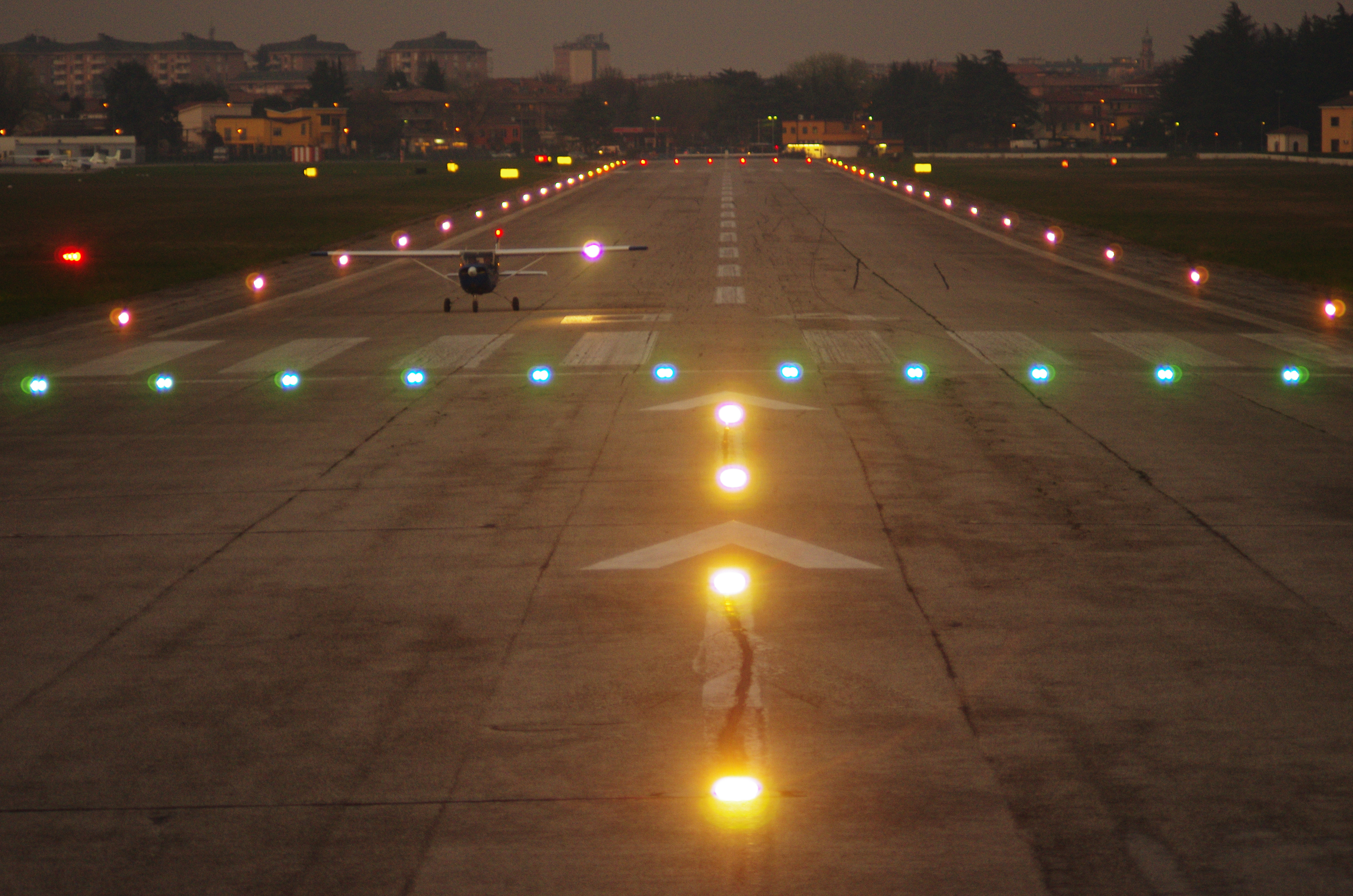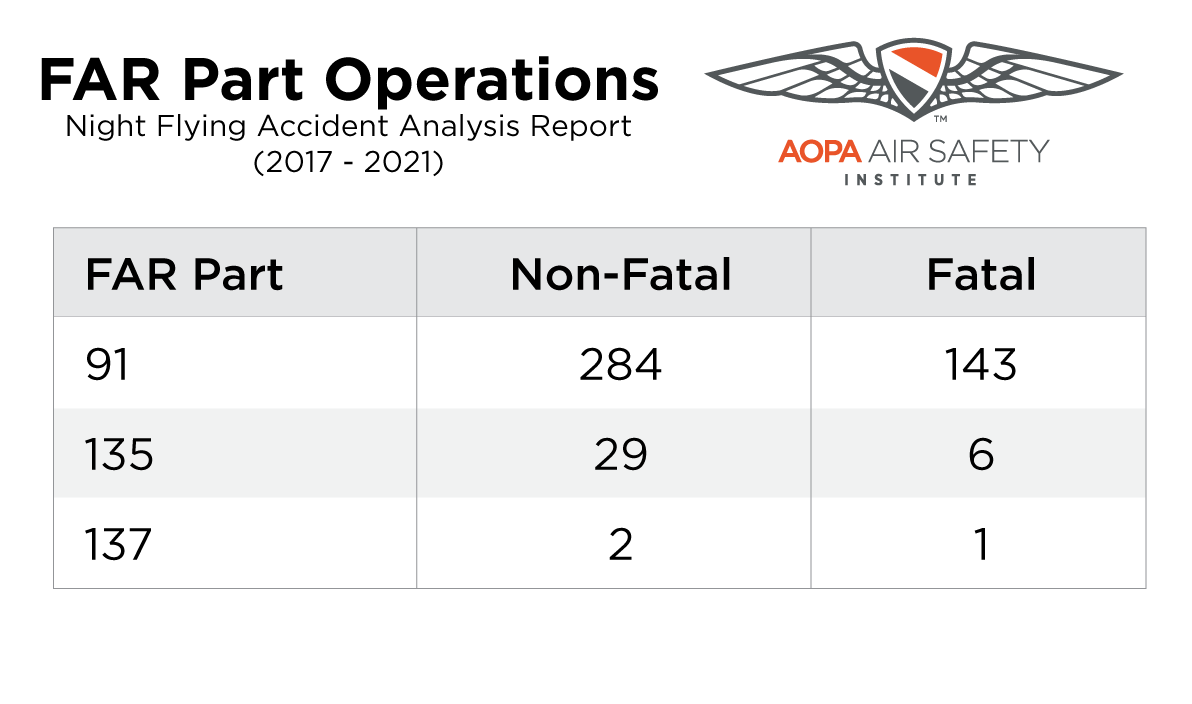FLIGHT CONDITIONS

Flight Phase
Night accidents occur with the highest frequency during the en route phase of flight (28 percent)—in contrast to overall daytime GA flights when accidents are more common during the landing phase of flight. VFR approach is second (12 percent) followed by initial climb (11 percent). Landing, distinctly absent from the top three compared to daytime accidents, is broken into multiple subparts such as flare and landing roll. All subparts, when combined, only bump landing into second place.
Takeoff and landing phases account for minimal fatal accidents. Survivability increases the slower and lower to the ground the aircraft is.

Fatal Accident Flight Phase
Reviewing only fatal accidents, the en route phase (37 percent) remains the leading accident phase. Initial climb moves to second (17 percent) followed by maneuvering (13 percent). The difference between maneuvering and en route are usually altitude and destination. Local flights, typically, put the aircraft in the maneuvering phase. Cross-countries would indicate an en route phase.

Impact forces drive fatal accident statistics. Takeoff and landing phases account for minimal fatal accidents. Survivability increases the slower and lower to the ground the aircraft is. Only one landing accident was fatal, and it involved a pilot who attempted to abort the landing after touchdown. In this case, decelerating into the crash is preferable to accelerating into the crash. The challenge is accepting that a crash is imminent.
Weather Conditions
Eighty-four percent of night accidents were in visual meteorological conditions (VMC) and 14 percent in instrument meteorological conditions (IMC). The remainder are unknown. Of the 390 VMC accidents, 103 (26 percent) were fatal. IMC was far more deadly. More than 67 percent of accidents were fatal. Night IMC is highly lethal. Flights occurring during these conditions warrant additional mitigations.

Of the 390 VMC accidents, 103 (26 percent) were fatal. IMC was far more deadly. More than 67 percent of accidents were fatal.
FAR Parts 91, 135, and 137
The highest frequency of accidents occurred during Part 91 operations (427). Part 135 is second (35), followed by Part 137 (3). A potential explanation for the small number of night accidents among Part 135 operators is the result of limitations imposed on commercial pilots without instrument ratings. The prohibition of night flights without an instrument rating offers partial protection and supports the validity of such a limitation on a commercial certificate for pilots operating for hire.

Purpose of Flight
Aircraft operations categorized as personal flight dominates both fatal (121) and non-fatal (214) accidents. Flight training (instructional flight) follows personal flight as the second-highest operational type. The difference between the two operation types is difficult to account for as personal flight dominates. However, the most common explanation is that freedom within personal flight operations and no strict standard for operations (e.g., such as in flight training) creates an environment where pilots are the sole decision-makers regarding their flights’ safety. Encouraging pilots to receive instruction during night flights will improve proficiency and fill the knowledge gaps, reducing accidents.

Aircraft operations categorized as personal flight dominates both fatal (121) and non-fatal (214) accidents.
Real Pilot Story: Powerless Over Paris
An instrument-rated, commercial pilot flying through thick IMC at night experiences a full electrical failure. The pilot shares the lessons he learned from this incident. Hear the story firsthand from the pilot and controllers involved.